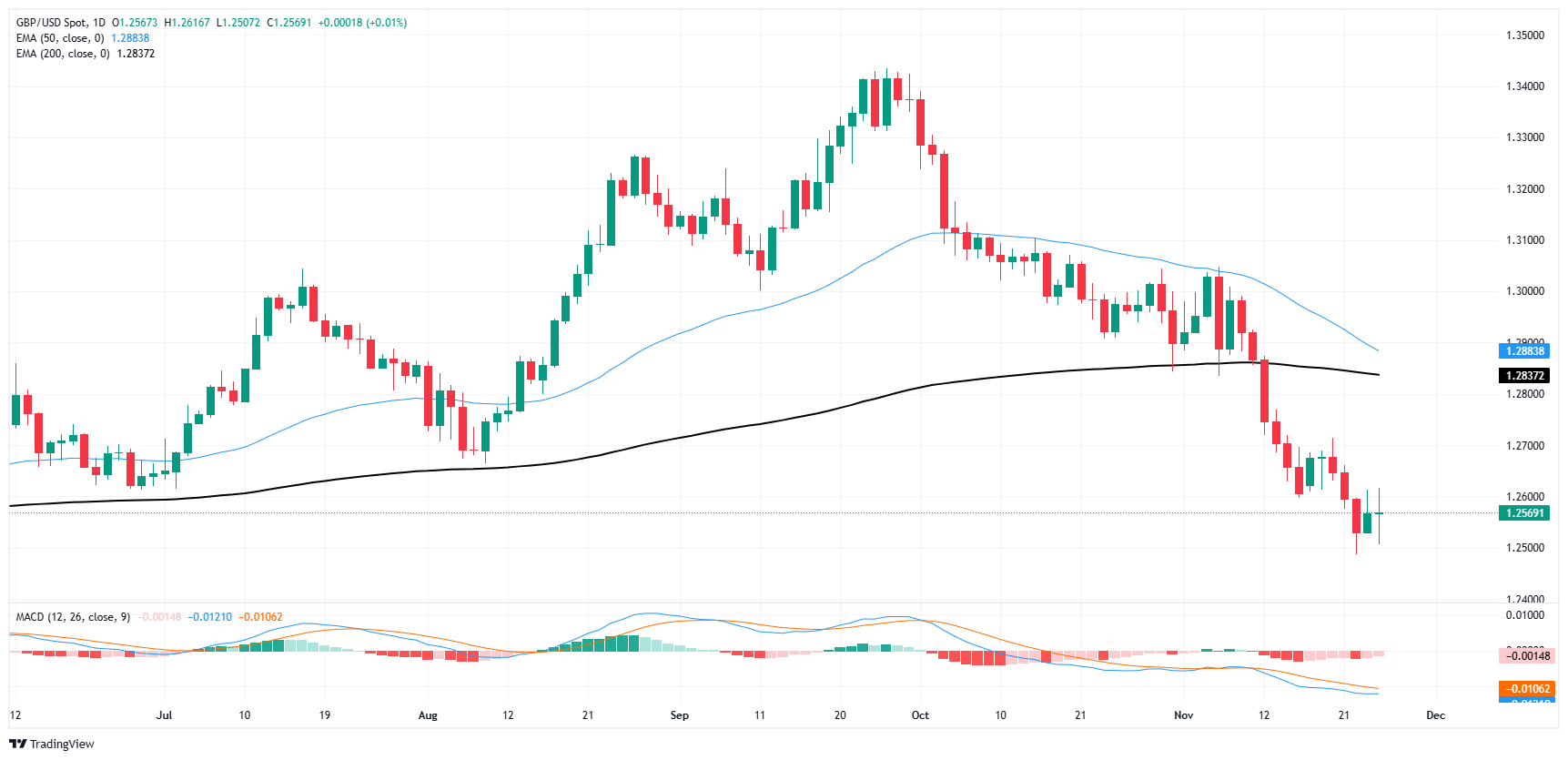- GBP/USD wavered just below the 1.2600 area on Tuesday.
- Sterling bidders remain elusive amid a light data calendar.
- Overall market sentiment shifting ahead of key US inflation numbers
GBP/USD moved just below 1.2600 on Tuesday, marking familiar territory as the British Pound struggles to find intraday direction against the US Dollar. A limited data schedule on both sides of the Atlantic kept Cable traders in place, but looming US inflation data could unleash a new round of volatility ahead of the US Thanksgiving holiday. US scheduled for Thursday.
A series of UK financial activity figures are scheduled to be published on Friday, but the figures are mostly low-level and will have limited impact. Some particularly studious sterling traders will be keeping an eye on the Bank of England’s latest Financial Stability Report, also scheduled for Friday, but market movement is likely to be limited by the release.
Wednesday will bring another update to the US Personal Consumption Expenditure Price Index (PCEPI), a key reading of the price increases underpinning the US economy. Wednesday also brings a quarterly update on US Gross Domestic Product (GDP) growth. PCEPI annualized core inflation is expected to accelerate again in October and is forecast to rise to 2.8% from 2.7% previously. US quarterly GDP growth in the third quarter is expected to remain stable at 2.8%.
GBP/USD Price Forecast
GBP/USD continues to limp on the southern side of the 1.2600 zone, moving north of 1.2500 as the pair finds some respite after another drop from the rough early November plateau just below 1.3000. Cable hit a six-month low of 1.2487 late last week, marking a 7% top-to-bottom drop from September peaks at 1.3434.
In the short term, Pound bulls awaiting an end to the current Dollar rally will look for intraday bids to return to the 200-day EMA near 1.2840, while long-term short positions will look for an opportunity to regain momentum and drag the Cable back to the 2024 lows in the 1.2300 area.
GBP/USD Daily Chart
The British Pound FAQs
The British Pound (GBP) is the oldest currency in the world (AD 886) and the official currency of the United Kingdom. It is the fourth most traded foreign exchange (FX) unit in the world, accounting for 12% of all transactions, averaging $630 billion a day, according to 2022 data. Its key trading pairs are GBP/ USD, which represents 11% of FX, GBP/JPY (3%) and EUR/GBP (2%). The British Pound is issued by the Bank of England (BoE).
The most important factor influencing the value of the Pound Sterling is the monetary policy decided by the Bank of England. The Bank of England bases its decisions on whether it has achieved its main objective of “price stability” – a constant inflation rate of around 2%. Its main tool to achieve this is the adjustment of interest rates. When inflation is too high, the Bank of England will try to control it by raising interest rates, making it more expensive for people and businesses to access credit. This is generally positive for sterling, as higher interest rates make the UK a more attractive place for global investors to invest their money. When inflation falls too much it is a sign that economic growth is slowing. In this scenario, the Bank of England will consider lowering interest rates to make credit cheaper, so that companies will take on more debt to invest in projects that generate growth.
The data released measures the health of the economy and may affect the value of the pound. Indicators such as GDP, manufacturing and services PMIs and employment can influence the direction of the Pound.
Another important piece of information that is published and affects the British Pound is the trade balance. This indicator measures the difference between what a country earns from its exports and what it spends on imports during a given period. If a country produces highly in-demand export products, its currency will benefit exclusively from the additional demand created by foreign buyers seeking to purchase those goods. Therefore, a positive net trade balance strengthens a currency and vice versa in the case of a negative balance.
Source: Fx Street
I am Joshua Winder, a senior-level journalist and editor at World Stock Market. I specialize in covering news related to the stock market and economic trends. With more than 8 years of experience in this field, I have become an expert in financial reporting.







